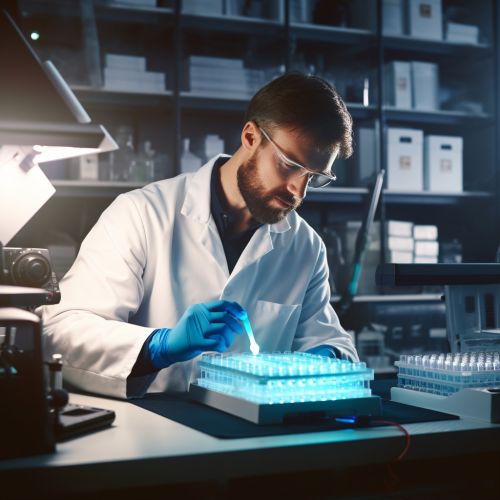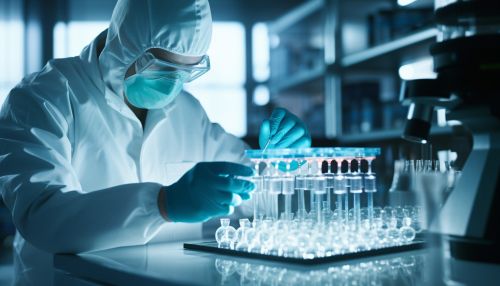Quantitative PCR
Introduction
Quantitative PCR (qPCR), also known as real-time PCR, is a laboratory technique in molecular biology that allows for the quantification of DNA sequences. It is a variant of the Polymerase Chain Reaction (PCR) that provides real-time monitoring of the amplification process, enabling accurate quantification of the target DNA. This technique is widely used in research and diagnostic settings due to its high sensitivity, specificity, and broad quantification range.
Principles of qPCR
The basic principle of qPCR is similar to that of traditional PCR, involving the amplification of specific DNA sequences. However, qPCR incorporates the use of fluorescent reporters, which emit fluorescence in response to the amplification process. This allows for real-time monitoring and quantification of the DNA.
There are two main types of fluorescent reporters used in qPCR: DNA-binding dyes and sequence-specific probes. DNA-binding dyes, such as SYBR Green, bind to all double-stranded DNA and emit fluorescence upon binding. Sequence-specific probes, on the other hand, are designed to bind to specific DNA sequences and emit fluorescence only when bound and during the amplification process.
qPCR Workflow
The qPCR workflow involves several steps, including sample preparation, reaction setup, thermal cycling, and data analysis.
Sample Preparation


The first step in qPCR is sample preparation. This involves extracting the DNA from the sample, which can be a complex process depending on the nature of the sample. The DNA is then purified to remove any potential inhibitors of the PCR reaction.
Reaction Setup
The reaction setup involves mixing the DNA sample with the PCR reagents, including the DNA polymerase, primers, dNTPs, and the fluorescent reporter. The mixture is then placed in a qPCR machine, which is essentially a thermal cycler equipped with a fluorescence detection system.
Thermal Cycling
The thermal cycling process involves repeated cycles of heating and cooling to facilitate the denaturation, annealing, and extension steps of the PCR reaction. The fluorescence emitted by the reporter is measured in real-time during each cycle, allowing for the quantification of the DNA.
Data Analysis
The data analysis involves determining the cycle threshold (Ct), which is the cycle number at which the fluorescence signal exceeds the background level. The Ct value is inversely proportional to the amount of target DNA in the sample, allowing for its quantification.
Applications of qPCR
qPCR has a wide range of applications in various fields, including research, diagnostics, and forensics.
In research, qPCR is used for gene expression analysis, genotyping, and validation of next-generation sequencing data. In diagnostics, it is used for the detection and quantification of pathogens, as well as for the detection of genetic mutations and abnormalities. In forensics, qPCR is used for DNA profiling and the quantification of DNA in samples.
Advantages and Limitations of qPCR
qPCR offers several advantages over traditional PCR, including its high sensitivity, specificity, and broad quantification range. It also allows for real-time monitoring of the amplification process, eliminating the need for post-PCR analysis.
However, qPCR also has some limitations. The use of fluorescent reporters can increase the complexity and cost of the reaction. In addition, the accuracy of qPCR can be affected by various factors, including the quality of the DNA sample, the efficiency of the PCR reaction, and the performance of the fluorescent reporter.
